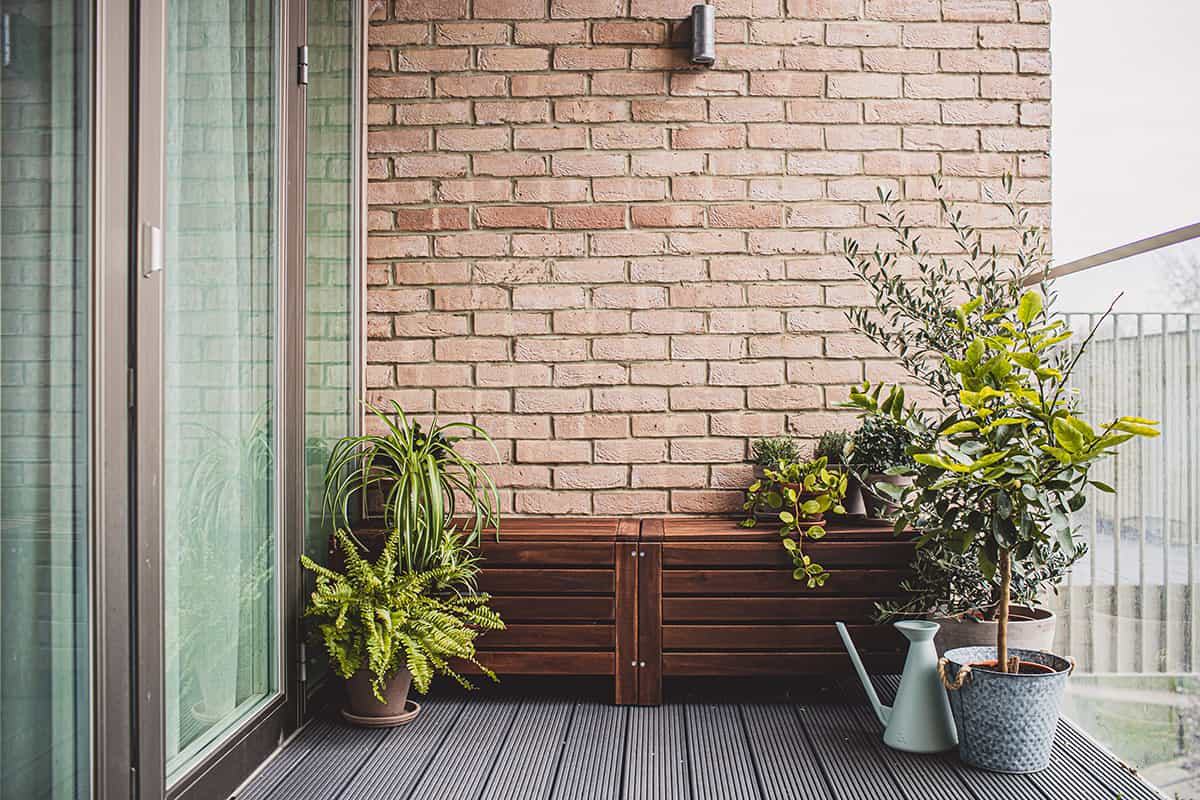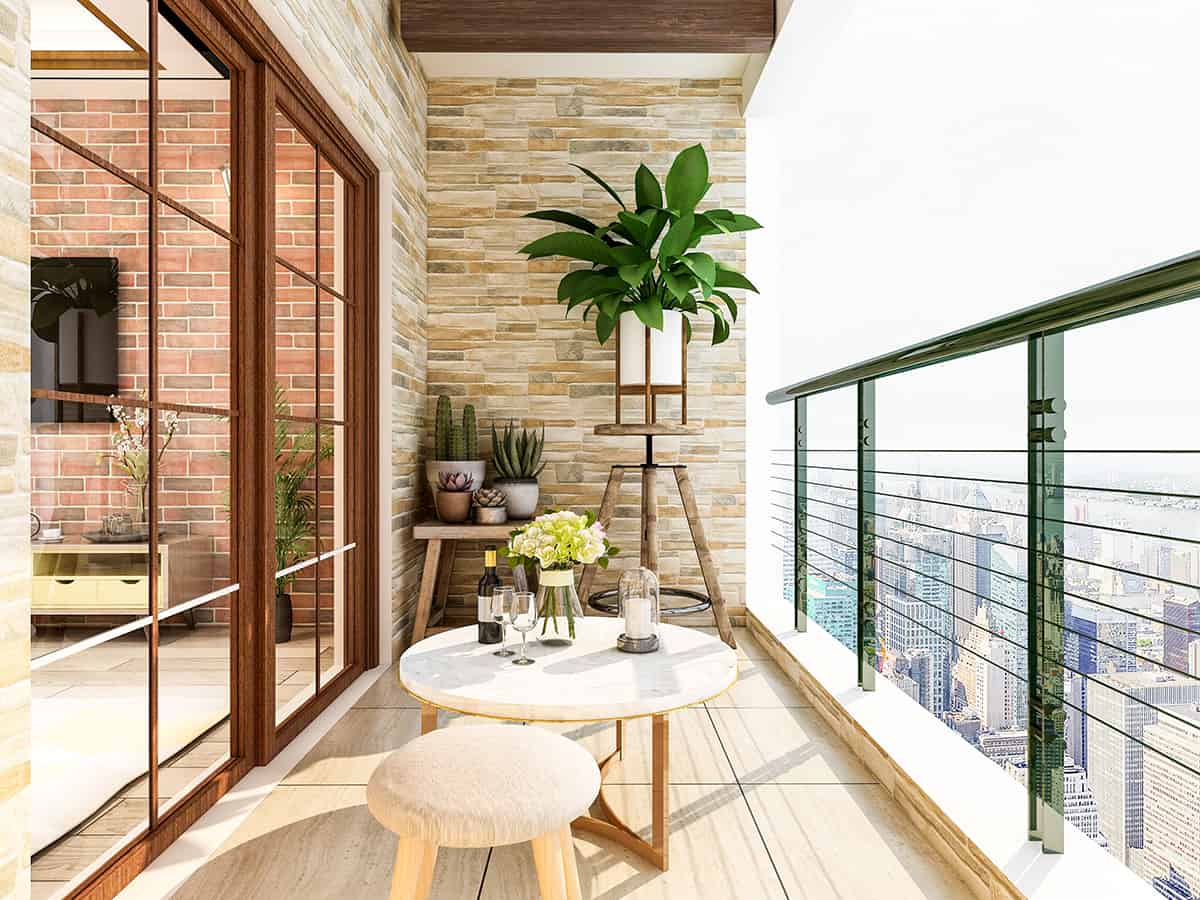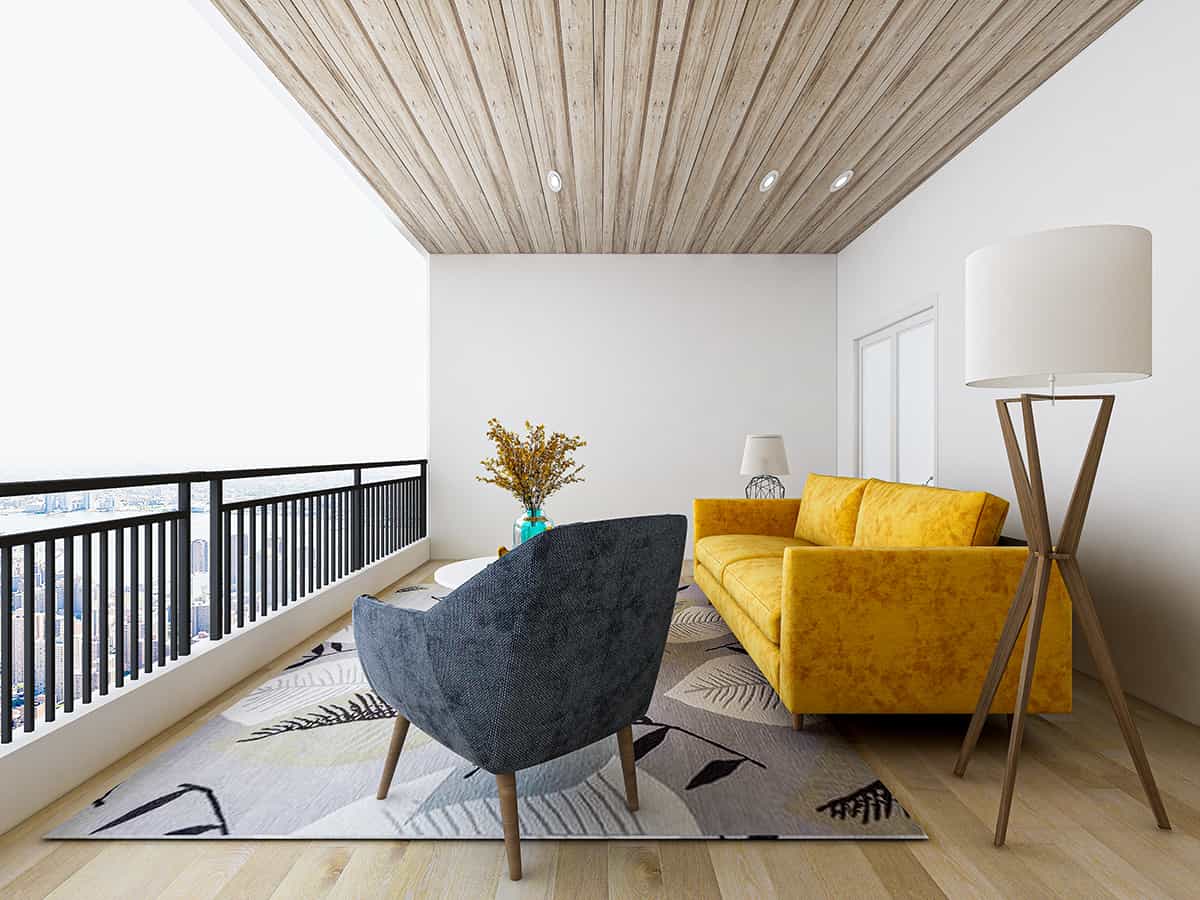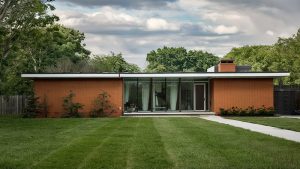Balconies are a desirable feature on properties that can make both houses and apartment units more attractive to potential buyers.
A property with a balcony can be easier to sell than one without, and it can also increase the value of a home. Here we look at the standard size of balconies, different types of balconies, and how various sizes of balconies can be used.
You will typically find a balcony dimensions of 4 feet in depth and 10 feet in width. The balcony depth should be at least 1.5 to 2 feet. And depending on the type of balcony, dimensions vary. Here are the suggested dimensions for common balcony types.
- Standing balcony – 2 feet deep to provide enough space for a person to stand on.
- Breakfast balcony- 3 to 4 feet deep and 5 to 6 feet wide.
- Entertaining balcony – at least 6 feet deep and 6 feet wide, but the bigger, the better.
Average Balcony Size
There is no standard balcony size because the depth and width of each balcony are going to be affected by the building it is a part of, the room it is coming from, and the budget of the build.
However, the average size of a balcony that you can expect is around 4 feet deep and 10 feet wide. Balconies smaller than this would be considered compact balconies, but they can still be useful in a number of ways.
Minimum Balcony Size
The minimum usable balcony depth is 1.5 to 2 feet. The width measurement is less important, though it will, of course, need to be as wide as a door so that it can be accessed from the inside of the property. Proportion is more important when designing a balcony to ensure it is a usable space.
Balconies that are long and narrow tend to end up being more like storage spaces than usable areas for spending time, so these are best avoided unless you specifically want an outdoor area for lining up a row of plants.
Common Types of Balcony and Their Sizes
There are different types of balconies which are defined by their dimensions. Smaller balconies tend to be found on smaller properties or apartment units, but even large properties can sometimes be home to small balconies, for example, a Juliet balcony extending from a master suite in a sprawling home.
In some cases, you can find large balconies on small properties, where the balcony works as part of the living space.
Standing balcony
A standing balcony is the most common type of balcony you will find in a master bedroom, and they are also widely known as Juliet balconies. These small balconies don’t offer enough space to take a seat, but instead they are great for opening the space out onto a nice view or enjoying the weather.
A standing balcony only needs to be 2 feet deep to provide enough space for a person to stand on. A standing balcony can also be a great space for growing plants, creating a mini garden to nurture, or developing a herb planter for fresh herbs to add to dishes in the kitchen. While they don’t create outdoor space for relaxing or spending much time on, they can improve the visual aesthetic of a building and effectively operate as larger-than-average, attractive windows.
Breakfast balcony
A breakfast balcony is big enough to accommodate a small table and two chairs, providing the ideal space for two people to enjoy an alfresco meal or sit and read a book with a drink during pleasant weather.
The breakfast balcony should be 3 to 4 feet deep and 5 to 6 feet wide.
Entertaining balcony
An entertaining balcony is the biggest sort of balcony you can get, and these are perfect for a full-sized outdoor table that will seat four or six people. An entertaining balcony must be at least 6 feet deep and 6 feet wide, but the bigger, the better.
An entertaining balcony really adds extra square footage to a property, essentially creating an additional living area. These types of balconies are a huge selling point for a property.
Ways to Use a Balcony and Suggested Sizes
If you’re designing a balcony to add to your home, then first consider what you want to use the balcony for. Having an understanding of how you want to utilize the balcony will help you to figure out the most appropriate size.
Entertaining
If you want to entertain on a balcony, then it should be a generous size. To fit a dining table on a balcony that will seat 4 or more people, then the balcony should be a minimum of 6 feet deep and 6 feet wide, though more commonly, a good entertaining balcony will be 6 feet in depth and 10 to 12 feet in width.
Exercising
If an apartment lacks space for exercising, a balcony could create a good solution. A bright and sunny balcony is an ideal spot to practice yoga, or to stretch before taking a run. A medium-sized balcony will be big enough for an individual to perform some stretches. You should look for a minimum balcony size of 3 feet in depth and 5 feet in width for exercising.
Growing plants
A balcony is an excellent place to grow plants, especially if a property lacks a garden. Any size of the balcony can be utilized for plant growing, even Juliet balconies. Plants should be grown in pots and containers, and the balcony will need to be in a sunny spot, such as a south or west-facing position.
Dining
If you live in a warm climate then a balcony can work as a year-round outdoor dining space. If the balcony is big enough, you could add an outdoor heater to the space to keep the temperature comfortable even during cooler months. For two people, a dining balcony will need to measure a minimum of 3 feet by 5 feet, or for a larger family, a balcony of 4 feet by 8 feet will be more appropriate.
Relaxing
If you want to spend time relaxing on your balcony, for example, by laying back with a book or catching some sun, then a relatively small balcony will suffice for one person. A standing balcony may be just big enough to accommodate a sun lounger or a deck chair, but for a more relaxing space or a balcony which will allow several people to hang out on, then a balcony of 4 feet in depth and at least 6 feet in width will be preferable.










